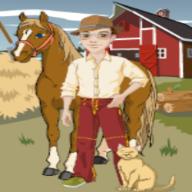✔ 最佳答案
太古時期,有一種兇猛的怪獸,散居在深山密林中,人們管它們叫“年”。“年”的形貌猙獰,生性兇殘,專食飛禽走獸、鱗介蟲豸,一天換一種口味,從磕頭蟲一直吃到大活人,讓人談“年”色變。慢慢地,人們掌握了“年”的活動規律,原來它每隔三百六十五天竄到人群聚居的地方嘗一次口鮮,而且出沒的時間都是在天黑以後,等到雞鳴破曉,它們便返回山林中去了。算准了“年”的肆虐日期,男男女女便把這可怕的一夜視爲關煞,稱作“年關”,並且想出了一整套“過年關”的辦法:每到這一天晚上,家家戶戶提前做好晚飯,熄火淨竈,再把雞圈牛欄全部拴牢,然後把宅院的大門封住,躲在屋裏吃“年夜飯”——由於這頓晚餐具有凶吉未蔔的意味,所以置辦得很豐盛,除了要全家老小圍在一起用餐表示和睦團圓外,還須在吃飯前先供祭祖先,祈求祖先的神靈保佑他們平平安安地度過這一夜。吃過晚飯後,誰都不敢睡覺,擠坐在一起閒聊壯膽。
天色漸漸黑了下來,“年”從深山老林裏竄了出來,摸進人群聚居的村落。只見家家戶戶宅門緊閉,門前還堆著芝麻杆,街上卻瞧不見一個人影兒。轉了大半個晚上的“年”毫無所獲,只好啃些芝麻杆充饑。再過些時,公雞啼曉,這些兇殘而又愚蠢的怪物只得怏怏返回。熬過“年關”的人們欣喜不已,要感謝天地祖宗的護佑,要互相祝賀沒有被“年”吃掉,還要打開大門燃放鞭炮,去同鄰里親友見面道喜……,人們見面互相拱手作揖,祝賀道喜,慶倖沒被年獸吃掉。這樣過了好多年,沒出什麽事情,人們對年獸放鬆了警惕。就在有一年三十晚上,年獸突然竄到江南的一個村子裏。一村子人幾乎被年獸吃光了,只有一家挂紅布簾、穿紅衣的新婚小兩口平安無事。還有幾個童稚,在院裏點了一堆竹子在玩耍,火光通紅,竹子燃燒後“啪啪”地爆響,年獸轉到此處,看見火光嚇得掉頭逃竄。此後,人們知道年獸怕紅、怕光、怕響聲,每至年末歲首,家家戶戶就貼紅紙、穿紅袍、挂紅燈、敲鑼打鼓、燃放爆竹,這樣年獸就不敢再來了。在《詩經·小雅·庭燎》篇中,就有“庭燎之光”的記載。所謂“庭燎”就是用竹竿之類製作的火炬。竹竿燃燒後,竹節裏的空氣膨脹,竹腔爆裂,發出劈劈啪啪的響聲,這也即是“爆竹”的由來。可是有的地方,村民不知年獸怕紅,常常被年獸吃掉。這事後來傳到天上的紫微那兒,他爲了拯救人們,決心消滅年獸。有一年,他待年獸出來時,就用火球將它擊倒,再用粗鐵鏈將它鎖在石柱上。從此,每到過年,人們總要燒香,請紫微星下界來保平安。
這種現象逐漸蔚成了綿綿相傳的“過年”和“拜年”的風俗,“拜年”的風俗內容豐富,通常的順序是:“先拜天地,次拜祖宗,再拜高堂,然後出門去拜親朋友好,亦有初一拜本家、初二拜岳家、初三拜親戚……等各種講究,直至拜到正月十五,所謂拜個晚年。”


